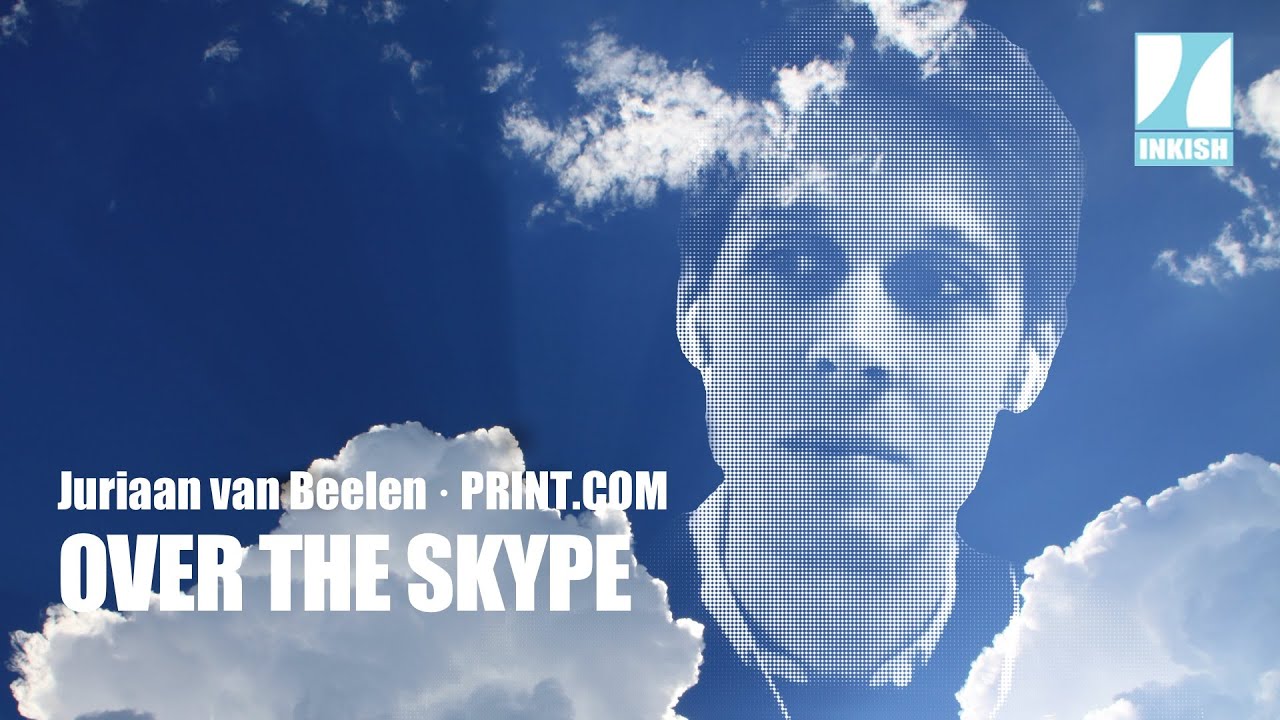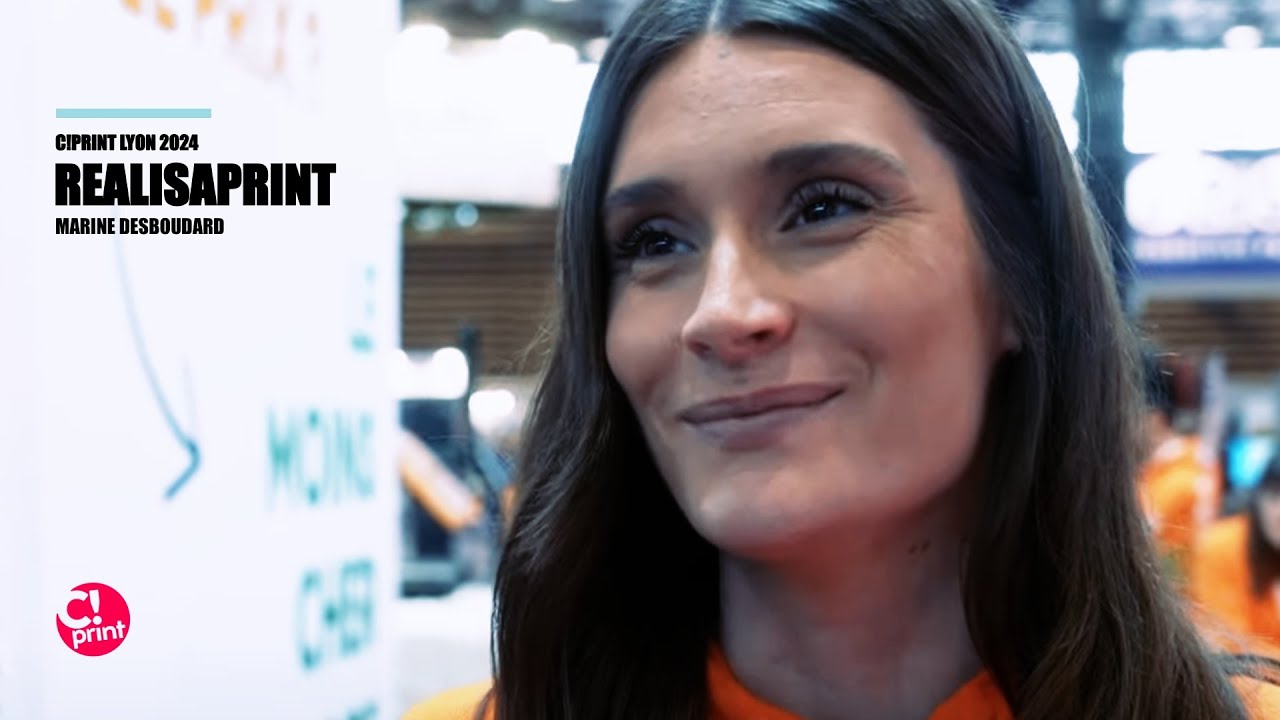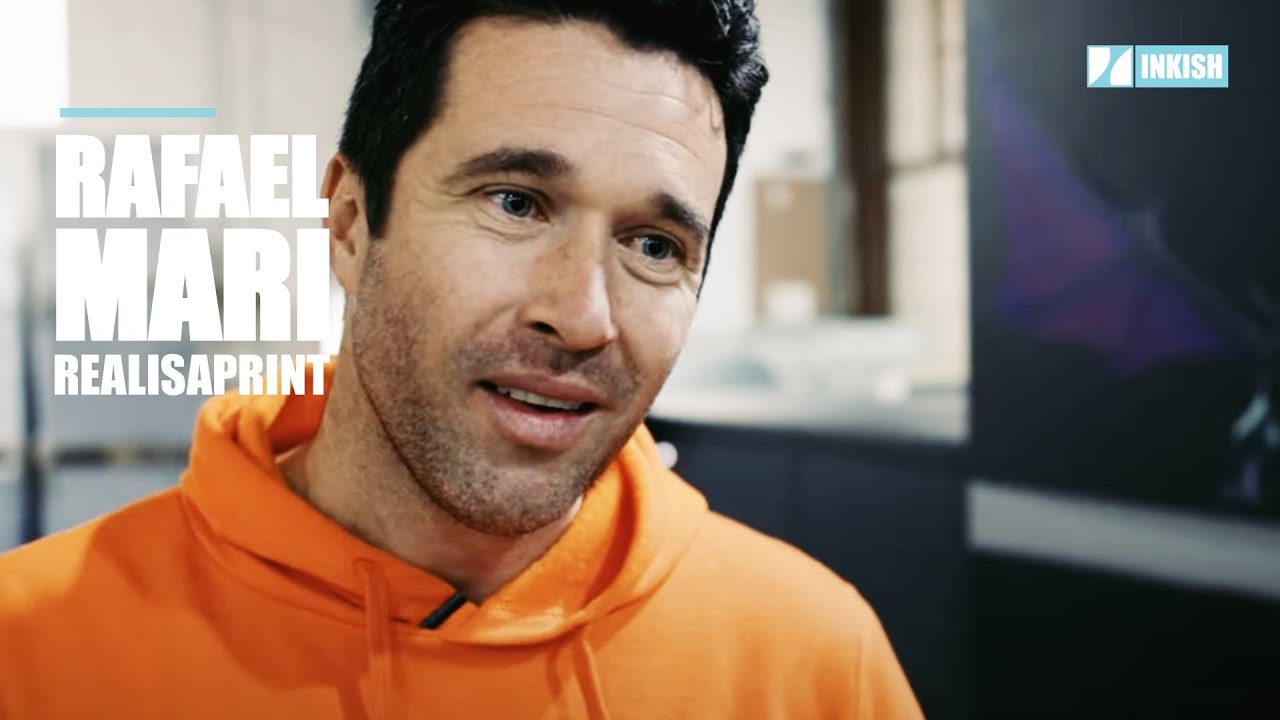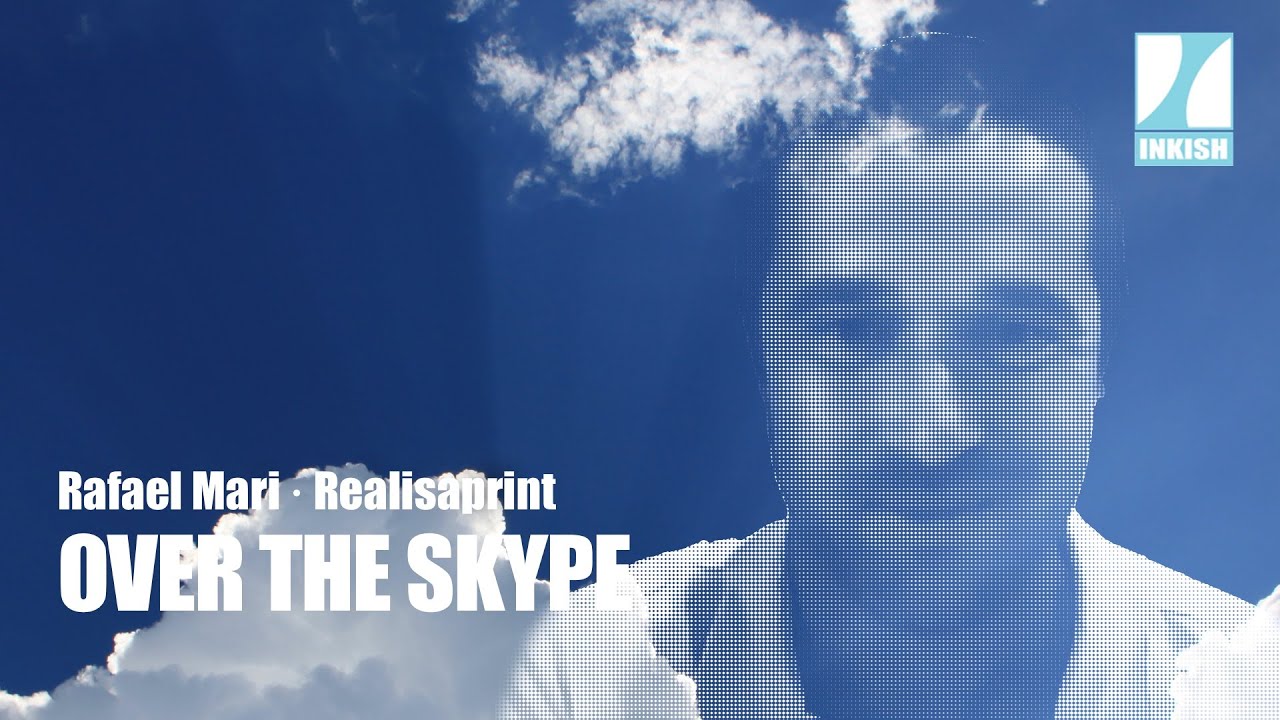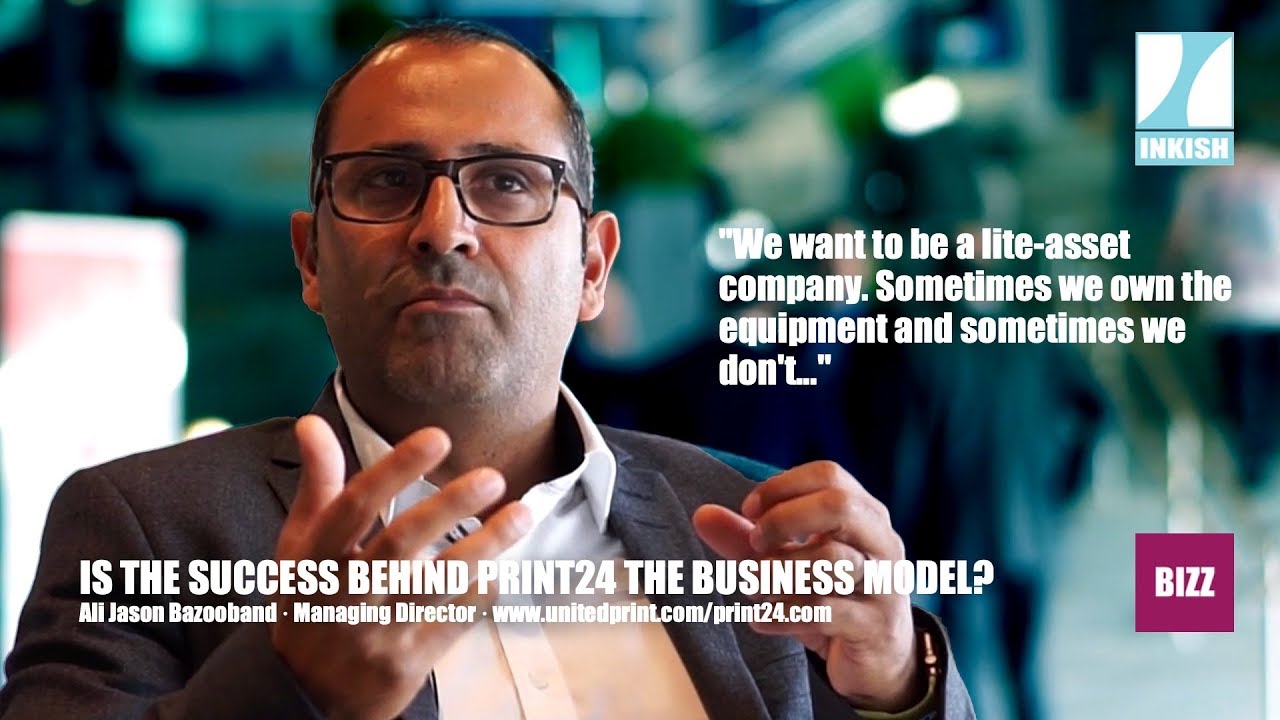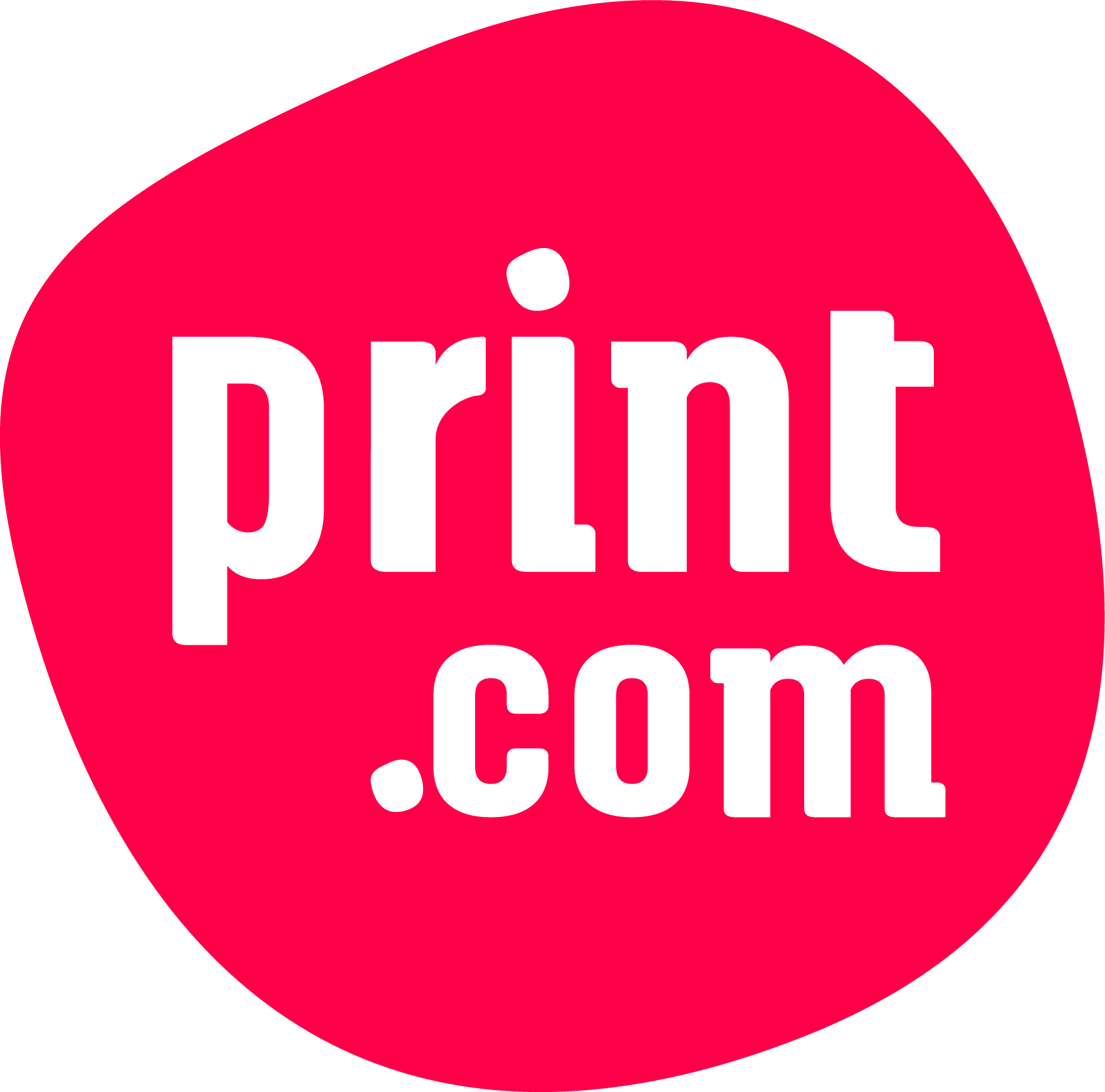Juriaan van Beelen · Over The Skype · PRINT.CO
In this ‘Over the Skype’ session Chief Co-creation Juriaan van Beelen of the online printing player – Print.com – talks with Jacques Michiels from INKISH Benelux about their business strategy, their focus on the professional market of Printers and print shops.
Print.com offers online printing services in a “closed platform” and with App Connectivity.
We talk about how Print.com see their own future and that of their customers, the Printers and Print providers in the BENELUX and the surrounding countries.
All very interesting considerations and evolutions!
We keep you Up to date!
—
In deze ‘Over the Skype’ sessie spreekt Chief Co-creatie Juriaan van Beelen van de onlinedrukwerkspeler – Print.com met Jacques Michiels van INKISH Benelux over hun bedrijfsstrategie en hun focus op de professionele markt van drukkerijen en printshops.
Print.com biedt online drukwerkservices in een “gesloten platform” en met App Connectivity.
We praten samen over hoe zij hun eigen toekomst zien en die van hun klanten, zijnde de drukkerijen en Print providers in de BENELUX en haar omringende landen.
Allemaal interessante overwegingen en evoluties!
Hou dus samen met ons de vinger aan de pols!
Hello, good morning everyone, here is Jacques from INKISH. Today we have a new Over de Skype for you with an interesting person and an interesting topic that we are going to discuss today. Today we speak with Juriaan van Beelen from print.com. He is Chief Co-creation there and of course today we will talk about print and the online models and how it will continue in the future. So yes, hello Juriaan, good morning. Please introduce yourself and what you are doing there at print.com.
I am Juriaan van Beelen of print.com, indeed mainly involved in co-creation within the organization. And that means as much as developing our business model, our services and our product range together. Together with our customers. As print.com, being in the Netherlands, Belgium, France and Germany, we always involve our customers in the process of change in the evolution of a company and ask for feedback every day with all kinds of different teams, and we collect that feedback. And we also do this in terms of content within the organisation. So if a customer would like to see a certain feature differently, we pass it on to development. And then we solve that. As soon as it is resolved, we inform the customer and in this way we really try to co-create with them. That is what we are all very busy with all day long.
Nice, we talked about that a little while ago as well. Of course they are challenging times again. Also in the Netherlands this time with a semi-lockdown. Belgium is also approaching it again, but don’t be too negative of course, we’re going to try to stay positive. Yes, what we want to talk about today. Maybe it will be interesting after all. The different approaches, how you see the market at print.com. And yes, you, I believe, mainly address the professional printing user/producer to ease their burden of some, yes more commodity- or more general printing I had understood. But so now. What do you actually think is the big difference between you and, for example, other online providers? Because you produce part of it, or most of it yourself.
That’s right.
Maybe abroad with partners. But that’s a different point of view than, say what, a HelloPrint or other colleagues who outsource their printing? How do you actually see that? Now in this COVID era as well? Is that an advantage or a disadvantage?
Whether it is necessarily an advantage or disadvantage in times of COVID, I find it hard to say. I think that the flexibility that it brings with it to produce in house is a big advantage. On the other hand, we don’t have to lie about the fact that our own production houses are now a little quieter than October 2019. So the time and flexibility is there to produce something fast. And I don’t think that’s where the biggest challenge lies. To answer that first question, what makes us different from our colleagues is that, as an online print shop and platform, we have built a web application exclusively for graphic professionals. So that could be a signmaker. A print shop, a copy shop, a designer or a content marketer of a corporate or a franchise. And so we co-create the application all day long. This means that if you, as a local printer, want to order flyers from us, you can choose from 77 paper types and 33 finishing methods. And that’s different for our colleagues, because they often deliver to the consumer within the same platform. And the consumer, if my mother needs flyers for the tennis club, you shouldn’t leave them the choice between 77 paper types and 33 finishing methods, because they won’t be able to see the wood for the trees. Our customers, our graphic professionals, like that. They want to have that choice. And so our platform is advantageous in that respect, but also in the fact that we always print the logo of every professional, on every box we adapt completely to that professional. And that’s really different from our colleagues.
Yes, because we were just talking about that, if I put myself in the mind of a printing company today in Belgium or the Netherlands, they are of course already very big guys who are very advanced in everything that is automation and optimization. The last weeks, months we also talked a lot about print 4.0 and smart printing companies and such. But we also have to be honest, there are still a lot of us who are not ready or even don’t want to go. So maybe what we mentioned earlier is the online service or online shopping a solution? And yes, that’s why we were looking into it. Many of us can also go to Belgium. For example, I’ll just mention a few names, I’ll just say a black and white, or you with print.com, but also many of us still shop or order in Germany, for example. With a Saxoprint or a print24 or an advertising country or so on. There are already many possibilities to order. And where do you think? Think of the recent perils at HelloPrint for example, where everybody has heard of? How do you actually see the future of the online print shop in function of, for example, the difficulties that the classic printer encounters with ordinary regular printed matter? What is your vision on this?
Well, I… Of course, you’ve seen it happen in other businesses for years. In the clothing industry, that’s what we’ve been evolving towards for a very long time. It’s either buying from a party that does the crowd, like the Hennis and Maurice, where you buy your underwear and a standard shirt in blue or whatever. Or you go to a real specialist. Someone who will make a tailor-made suit for you. Nice shirt or something else. Something in between is actually not there anymore. We saw in the Netherlands that the Vroom en Dreesmann, the V&D, which was pushed out by the customer because they were actually not very good in the masses and therefore not in the lowest price. And not really that hautecouture label was where you could buy something special. So all that stuff that’s in the middle between the masses and the niche work is being pushed out and I think that’s going to happen in the graphic industry just like that. In fact, you can already see it happening. The added value has become even more visible online. So a local player, a local offline player will have to excel even more in terms of design, in house production, perhaps something special, but commodity products, which we could just conclude, will at some point be picked up by the mass players. We from print.com, I don’t want to speak so much for my colleagues, but we from print.com very much want to be able to make that standard work. So 135 grams flyer A5 in offset we can do very well for a very competitive price, but we want to be able to deliver not only that standard work, but also a letterpress or gold foil or a completely different production technique, which you might otherwise find with a local niche player, we also want to offer in that portal because we believe that as print.com we have to fill a kind of wholesale function for that local professional where he can get everything from standard to very special. Other players may be more likely to combine that with, for example, a B2C platform where part of their volume comes from, so that they can continue to deliver at that competitive price. But with our closed application we only want to do the graphic professional, but really in width.
I do think it is important to underline that you really are a B2C, sorry a B2B platform with that closed application and that you act as partners for the printers for that type of products in which you are likely to be more efficient or more automated. Now perhaps I have a question. Looking a bit further, how do we think that at certain times when there will be an x number of online providers? You also recently moved to France, if I’m not mistaken, and I also thought Germany. How do you actually see your ability to make a sufficiently competitive difference there, for instance with those strong German players?
Well, you actually see it happen as soon as you introduce our platform. To take France as an example. We were there last year, no this year, it feels like a long time ago, this February in Lyon at the C!Print. We were there between Saxo, Flyeralarm, HelloPrint, Realisaprint. They were all there and without taking any of them off you could see that that graphic professional thought it was really cool what we were doing. Closed platform. Infinite choice it seemed. Fully equipped for the graphic professional, so we print every logo of the local professional on that box. We offer sample books, completely in the house style of the local professional. We offer different kinds of materials and finishes, all because the local graphic professional simply asks for them. I think that we as a start-up are so agile and also like to listen to our customers once in a while, that we actually realize the wishes they express to us, whether it’s about assortment or features. And we can, because our platform simply focuses on that type of customer. If that were again a mixed customer, i.e. a consumer and a professional, then you wouldn’t want to realize that kind of far-reaching features or a very deep assortment at all. Because then you will always make one of the two less happy, for example, because it becomes less surveyable. So the response to us is very good, especially because we listen very actively and proactively do something with the feedback that is given, making the application itself useful for someone in northeastern Groningen, in the Netherlands, up to the southernmost tip of France. Because they are all graphic professionals and they all have similar needs in terms of purchasing or ordering convenience what they are looking for from a partner.
Very interesting Juriaan. Then perhaps as a final point, because from the point of view of the professional, from the printing colleagues, for example. So I thought you produce in the Netherlands and abroad, I think you work with partners for the moment. How are you going to monitor this quality, i.e. the print.com quality, that it is uniform? Whether you produce it yourself or publish it, how do you control that?
That’s a very good question. And that is really an issue with us, or a topic of conversation I’d rather say internally. Indeed, at a time when you’re used to delivering a certain quality as a premium label, this should also be the case abroad. Fortunately, the graphic industry has evolved a lot over the years, the years ahead of us, which were, of course, exceptionally good. So even abroad there are fantastic machines and work great people who know very well how to finish a piece of printed matter. But that does not alter the fact that we will still have to do certain productions in the Netherlands at the moment, either because we haven’t picked the right supplier yet, or because they simply don’t exist. I always find the latter hard to believe. Every country has graphic specialists and enthusiasts. So I’m sure we can set up that supply chain in the other countries as well. But that hasn’t been done overnight. Certainly not if you consider that our network is of course very strong in the Netherlands and Belgium. With the previous back-to-print-startups we were able to make, we have of course built up a beautiful network in the Netherlands and Belgium. But beyond that we really need our country captains there with their network, who are setting up the business there again. So that is a challenge.
I can believe that, because country captains as you say, in Belgium it is Bruno Mossij I thought, who is in charge.
That’s right.
In France you will also have a colleague. The big challenges are, of course, ahead of everyone. I think it’s interesting to hear, also for printers themselves, that perhaps it’s at least five minutes to midnight to think about these things from what I still do myself? What do I no longer do myself? Do I use a reliable partner? In your case, with a closed platform. So I assume that there are also some sort of agreements, that there are no more direct contacts and the like.
That’s right.
Yes, so those business models are a bit different, especially with your business model versus the business models that are actually directly B2C involved, so I think it might be one of your strong points that might create peace of mind among colleagues.
I hope so. For the time being we can see that. And that is very nice. And I think that’s mainly due to the fact that we’ve really set up the entire application for that professional and that we can actually see that, I’ve literally done it. My mother, who once needed flyers for the tennis club, said: ‘Well ma. Go and have a look in the application and order a flyer’. So she got completely stuck because there’s too much jargon in it. There’s too much choice in it. In terms of options, materials, printing techniques. It just doesn’t work out. So some people sometimes ask us: ‘But aren’t you ever going to open the closed application? That’s almost impossible because he’s so focused on the professional that we would have to rebuild him from scratch, so to speak. Because it’s already too far for that.
Juriaan, thank you very much for your contribution. Very nice to be able to spar about ideas that concern all of us in the industry, of course. And I wish you a lot of success, also in this difficult and challenging time. But I think we can hopefully see each other somewhere soon.
Sounds good to me.
Okay, thanks in advance Juriaan.
You’re welcome.
See you soon.






























































